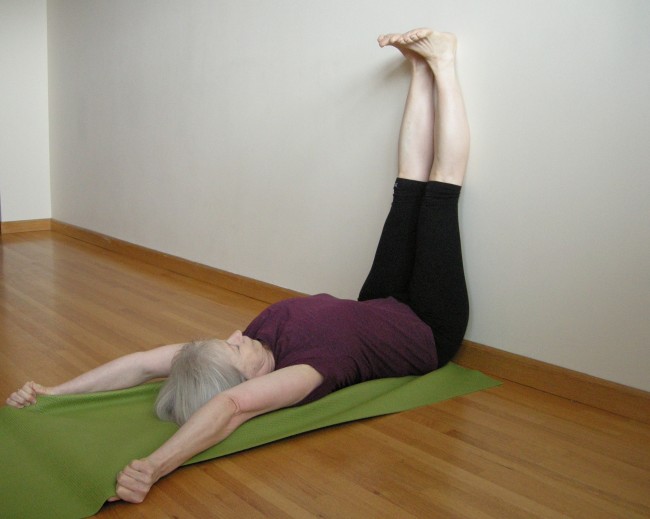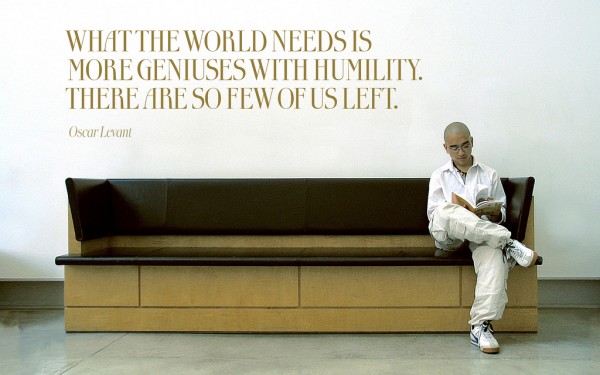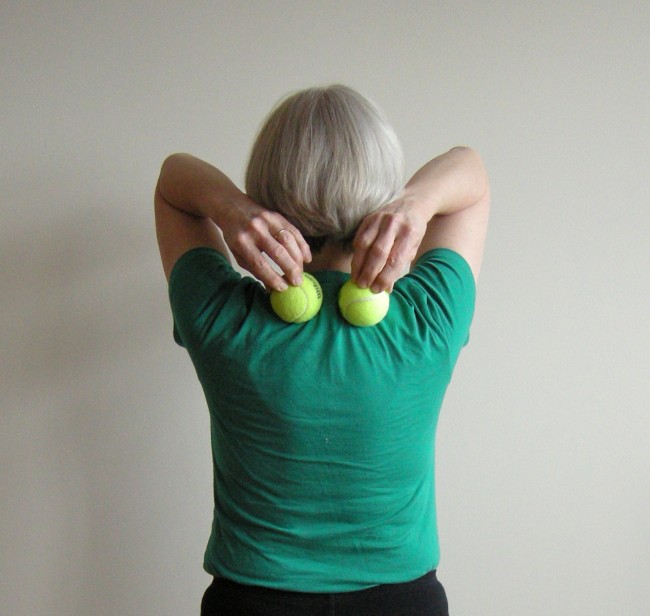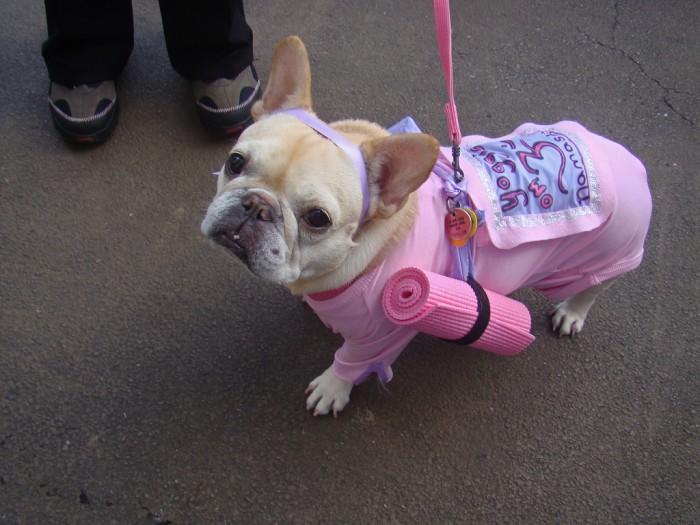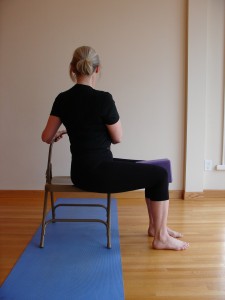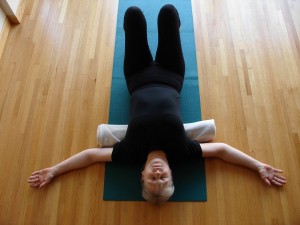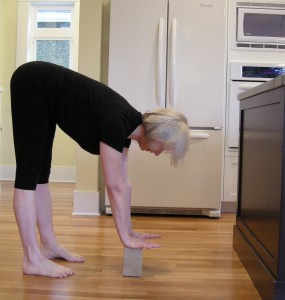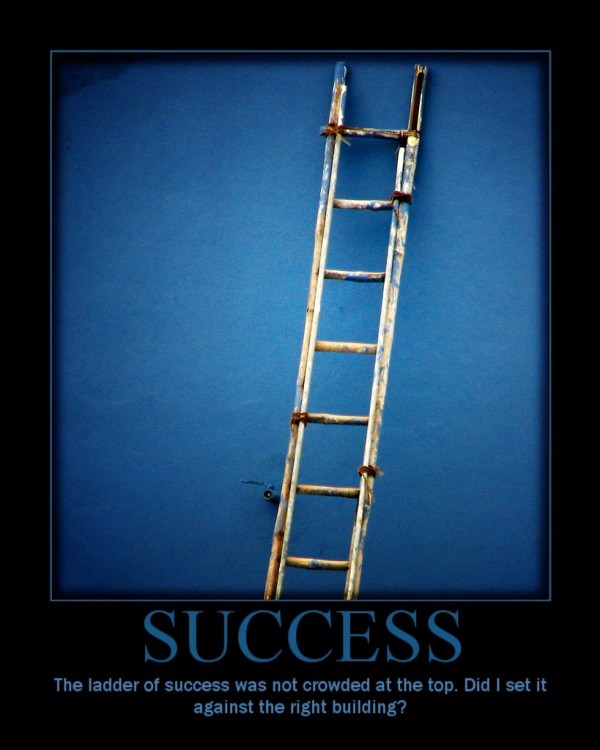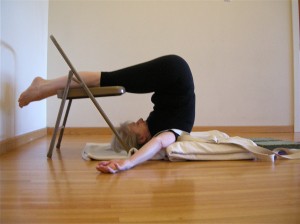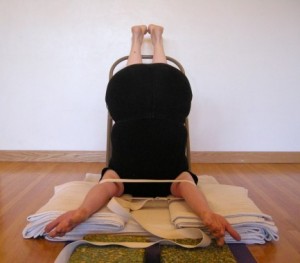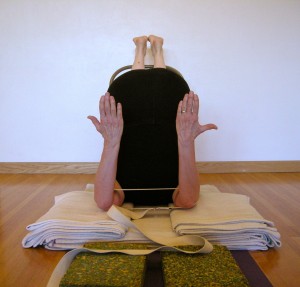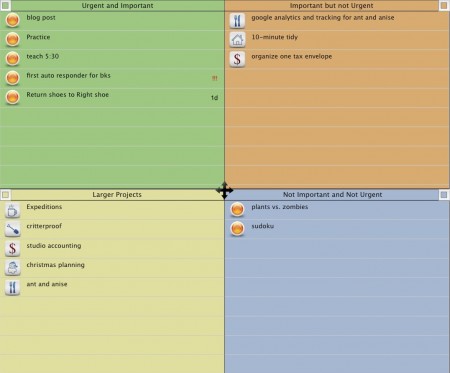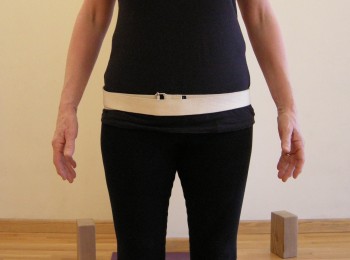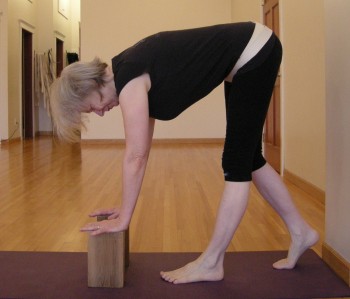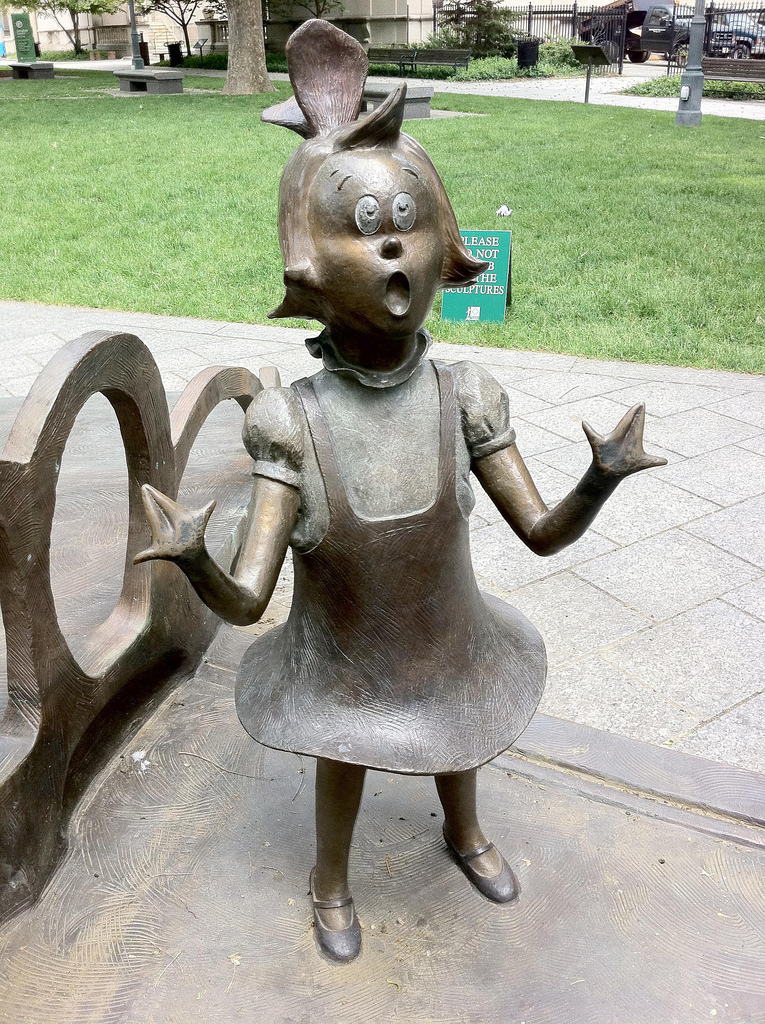
"Think left and think right and think low and think high. Oh, the thinks you can think up if only you try!" Dr. Seuss
One of the conundrums we face as beginning yoga students is that we can’t know what the pose is supposed to feel like until we’re doing it.
But if you start with the standard issue collapsed chest and tight shoulders of a 21st century desk worker, how can you even begin to know how large and expansive your ribcage needs to be?
One answer: a fabulous, yet inexpensive prop, the imaginary sticky mat.
I found mine last week in Louie’s Wednesday morning class, and I’ve been using it ever since.
Once you’ve learned to use yours, it will help you stretch your shoulders, expand your side ribs, breathe better and let go of anxiety.
Here’s how it works:
Lie down on your back with your legs up the wall.
Make sure that your back rests easily on the floor.
If your hamstrings are long, you can have your buttocks at the wall.
If they’re short and your buttocks are at the wall, your pelvis will be light on the floor, or even lifted. Move away from the wall until you are well grounded.
Now spread the skin on the soles of your feet, from the big toe side to the little toe side. Spread the skin on your heels. Separate your toes.
Press both your big toe mound and your heel toward the ceiling.
Lift your inner arches toward the ceiling, and draw your outer arches down toward your outer ankles.
From this action in your feet, you’ll feel your legs come alive.
Take your arms overhead. Stretch your arms to their maximum. Reach out to hold the sticky mat. Have your thumbs under the mat, so your palms face each other.
Grip the mat and pull it away from the wall as though you wanted to rip it in two. Extend particularly on the thumb side of your hand.
You’ll find the effect dramatic: legs press the wall, arms extend, back body lengthens, and belly presses to the floor.
In this position, notice your shoulder blades.
As you stretch your hands away from your shoulders, begin to pull your shoulder blades away from your hands.
Hold for a few breaths.
Then let go of the mat and slowly bring your arms, elbows straight, to shoulder width apart.
Stay aware of your elbows. If they start to bend, don’t take them closer together. Instead, find the place where your elbows can be straight, and stay there.
Palms facing each other, thumbs touching the mat, spread your palms and roll your inner upper arms toward your ears.
Stay for a breath or two, then release your arms to your sides and relax.
Bend your knees, roll to the right hand side and come up to sitting.
You can just stand up, or, for a pleasant transition, move through child’s pose into downward dog, then walk your feet forward to standing forward bend, and roll up.
Now roll out your imaginary yoga mat.
With your feet hip distance apart, bring your arms up, with your hands as wide as the imaginary mat.
Grip the sides of the imaginary mat, and pull. Lengthen up particularly through the thumb side of your hand.
You’ll be surprised by what happens. Your arms will reach to heights never before experienced, and your side ribs will stretch.
Once you have your full stretch, draw down on your shoulder blades.
Then let go of the imaginary mat, and open your hands so your palms face each other.
Slowly bring your arms shoulder distance apart.
Keep your elbows straight.
Stay, breathe, and when you’re ready, turn your palms toward the floor and slowly lower your arms, lifting your ribcage as you bring your arms down.
Imagine taking this expanded chest into the rest of your poses, and your life: “Oh, the thinks you can think up if only you try!”
Photo credits, Robert Gray, Mary Balomenos.
If this was your kind of post you might also like:
If you don’t know where you’re going, how do you get there?

